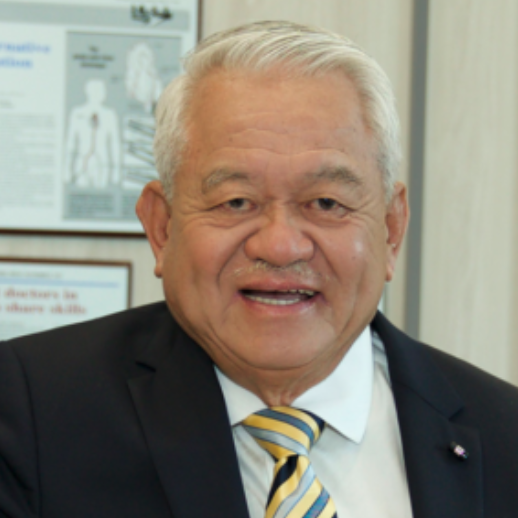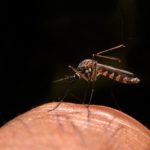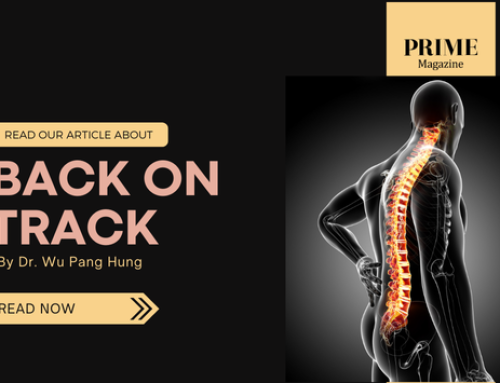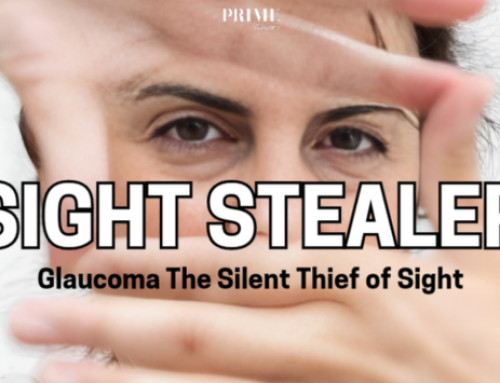
Ischaemic Heart Disease (IHD) or Coronary Artery Disease (CAD) is one of the leading causes of death in Singapore. Patients experiencing an acute heart attack or Acute Myocardial Infarction (AMI) have a mortality rate of 5-20%. An AMI occurs when one of the coronary arteries in the heart becomes completely obstructed. The most common cause of this obstruction is the rupture of a cholesterol plaque. There are other causes of AMI such as embolism, severe coronary artery spasm, severe myocardial bridging and spontaneous coronary artery dissection, but these are rarer (please see Diagrams 1 and 2).


WHAT HAPPENS DURING AN AMI?
When a plaque rupture causes an AMI, the majority of patients experience some kind of warning symptoms, such as central chest discomfort, chest pain or shortness of breath. However, about 30-40% of patients have no symptoms or atypical symptoms, and do not realise they are having an AMI. This is commonly referred to as a silent AMI. So-called silent AMIs are even more common in diabetics, accounting for about 60- 65% of AMI cases.
The Left Main Stem (LMS) of the left coronary artery delivers freshly oxygenated blood from the lungs to the heart. A plaque rupture anywhere in the complex web of blood vessels branching from the LMS can be life-threatening unless it is quickly treated. Statistically, the most dangerous place for a rupture to occur is the Left Anterior Descending Artery (LAD). Plaque ruptures in the LAD are sometimes called widow makers because AMIs occurring there have a mortality rate of 10-30%.
If the patient can reach a hospital within two hours of the onset of AMI, an emergency coronary angioplasty with stenting can open the arteries and restore blood supply to the heart. This may abort the whole heart attack. If it does not abort the heart attack, it will certainly reduce any permanent damage done to the heart as a result of the obstruction. After two hours of AMI onset, any delay would increase the mortality rate by 5% for every 30 minutes delay. There is also irreversible damage after two hours from onset.
 DELAY IN TREATMENT
DELAY IN TREATMENT
The average patient takes between 5-7 hours before he/she actually arrives at the hospital seeking help. There are many reasons for this long delay. For instance, the AMI may be symptomatic (silent AMI) where the patient remains unaware that he/she is having an AMI. Another common reason for delay is because AMI often occurs in the early hours of the morning (5-6 a.m.). At such early hours, patients can be reluctant to call their doctor or cardiologist, and they wait until the clinic opens at 9 a.m. before calling their doctor for help. By the time they reach the hospital, many hours may have passed since the onset of symptoms.
Yet another reason why patients are often reluctant to seek medical attention is because they do not want to believe that they are actually having a heart attack. They are hoping that their symptoms have a more benign explanation, such as a gastric problem or a pulled back muscle that will resolve itself if ignored for a few hours. It is only when the symptoms persist and perhaps get worse that they finally seek medical attention. Unfortunately. such behaviour only makes things worse because the quicker a patient gets to the hospital, and the faster the heart attack is diagnosed and treated, the greater the chance of a full recovery.
ANGELMED GUARDIAN
It was my search for a way to ensure patients having an AMI event seek timely medical attention that first led me to the AngelMed Guardian System. The AngelMed Guardian System is the world’s first implanted cardiac monitoring device that can warn patients of acute coronary syndrome (ACS) events, such as heart attacks. The device is simple to implant. It is placed under the skin below the clavicle and attached to the heart with a sensor lead, much like a pacemaker (please see Diagrams 3, 4 and 5).

AngelMed Guardian uses artificial intelligence and machine learning algorithms to continuously monitor the patient’s heart signals and alert him/her to any danger by vibrating, and an external alarm that beeps and has blinking lights. The inventors of the system recognised that it is often difficult for people at risk of ACS events to know when they really need to seek medical attention. Hence, they designed a system that would notify a patient when an ACS event may be imminent. Unlike a pacemaker, the Guardian monitors your heart’s electrical signal 24 hours a day, 7 days a week. It examines the heart signal for a rapid change that occurs during a resting heart rate (known as supply side ischaemia), which may indicate that your heart muscle is not getting enough oxygen. The system can detect ACS events even when a person has no symptoms or has symptoms that are not typical. It can diagnose ACS event within two minutes from the onset of event.
When the Guardian detects a potential ACS event, it vibrates inside your chest, alerting you that you need to take action. The vibration is strong enough to wake you from your sleep. In addition to the vibration, it communicates with a pager-sized device that both beeps and flashes, letting you know that you need to either call your doctor or 995 (local emergency services). Once you arrive at the hospital, your doctor can wirelessly retrieve a history of information collected by the Guardian. This information can help to inform the best course of action in providing an appropriate treatment pathway.
HOW ANGELMED GUARDIAN CAME TO SINGAPORE
A trial involving 1,000 patients was carried out in the US. After the trial, the implanted device was removed from the patients. The US FDA (Food and Drug Administration) gave approval or the Guardian device to be used commercially in 2018. During this time, the maker of the device decided to change the battery from a 3-year life span to a 5-year life span. FDA withdrew its approval and the whole device had to be evaluated again. A re- evaluation normally takes about 2-3 years.
Not wanting to wait that long, and convinced of the device’s benefits, I applied to the Health Sciences Authority (HSA) for a GN-27 special access arrangement license to use the Guardian device in Singapore. I was given approval to implant the Guardian monitor in selected patients. In August 2020, I carried out the first implants with the help of Dr Kelvin Wong in Singapore, together with several renowned cardiologists from the US via Zoom.
As a result, Singapore became the first country in the world to carry out long-term clinical implants of the device. A fact which caused the world-renowned cardiologist Dr Mitchell W. Krucoff. the Professor of Medicine/Cardiology at Duke University Medical Center to congratulate me by email. He remarked, “It sounds like Singapore is ready to lead the world in more than just COVID control! Congratulations on launching a new era for high-risk CAD patients.”
I also received emails of congratulation from many other leading cardiologists, including one from Dr David Holmes, Professor of Medicine, Department of Cardiovascular Medicine at the famous Mayo Clinic, who said, “Congratulations on this tremendous achievement. I think this technology will have great implications for the field. And marks a very important milestone as we try to optimise care and prevent complications by getting people to church on time.” Another note of congratulation came from Dr Michael Gibson, Professor of Medicine at Harvard Medical School, who said, “Congratulations Leslie! These patients are lucky to have you as their cardiologist! Great work!”
Since then, I have carried out a total of eight successful implants in Singapore under my GN-27 license. I expect that many more of the devices will be implanted by myself and other doctors in the near future since the HSA has fully approved the Guardian device in August of 2022.
EXPERIENCES OF PATIENTS
Mr Tan Kheng Siang was one of my first eight patients who received the Guardian device, thanks to four of my other Guardian patients who clubbed together to sponsor his procedure. He feels very lucky to have been given the device, even though it caused a little concern when it was first implanted.
Shortly after his Guardian device was implanted, the alarm went off. I had him come to my clinic where my team promptly downloaded the data from his device and sent it to Boston (US) to be analysed by some of the world’s leading experts. In almost real time, the support team in Boston was able to determine that Mr Tan was fine and did not need treatment. His Guardian monitor was recalibrated and Mr Tan was sent home.
Mr Tan recalled to me, “I had of a bit of fright when the alarm first went off, but you (Dr Lam) soon reassured me and I was amazed with the service I received. To have so many top doctors and professors looking at my readings and consulting on video calls was more than I expected. But now, I know that if I do have a heart attack, some of the best doctors in the world will be looking after me.”
I am sure the device can benefit patients like Mr Tan, who a have a history of prior ACS events, such as a heart attack, unstable angina, and who are at high risk for recurrent ACS events. Even patients who have had heart attacks can fail to recognise the symptoms of a recurrent event, or have another silent one with no symptoms. These patients are at greater risk of suffering serious damage or death. So, having a device that alerts them to seek immediate medical attention if they have an ACS event greatly improves their safety. And, according to the patients themselves, this also improves their quality of life as it reduces their anxiety and gives them the confidence to enjoy life and be more active.
That certainly seems to be the case for Mr Ong TS, the Singaporean business man who was my first Guardian patient. He had told me, “I feel much more secure and confident with the implant. It has taken a weight off my mind as I have had several heart attacks in the past, and another could be fatal without immediate emergency treatment.”

Mr Ong is a long-time patient of mine and I have been treating him for the past 40 years. I believe I know more about his health and heart than anyone else. Thus, when I suggested the Guardian device to him, he was open to the idea. He read up on the device and discussed it with me; and soon, it seemed like an obvious decision. “I am in my late 70s and if I have another heart attack might easily kill if me if I don’t get immediate medical attention. The longer it takes to realise you are having a heart attack and get treatment, the more dangerous it is. So, an early warning device could save my life,” Mr Ong had reasoned.
For Mr Ong, the biggest benefit of having the Guardian implanted is the confidence it gives him to live his life to the fullest and to push himself. He told me, “I actually got fitter after I had the Guardian implanted because I felt I could test myself and push my limits without worrying that I might be going too far. I was able to increase both the distance and the speed of my morning treadmill jog. I even felt more confident stretching and doing resistance work in my Pilates classes. For me, maintaining my mobility is more than just about my cardiovascular health, it’s about retaining my dignity and independence.”
My patients often mention to me the psychological benefits of the device. With it, they feel much more secure and confident in their day-to-day lives, especially when they are required to do something unusual like travelling. As a physician, I think the Guardian has benefits beyond its primary role in the early detection and warning of acute ACS events. The data it collects while monitoring the heart 24/7 can be very helpful to assess a patient’s overall heart health, and facilitate response to changes in diet and medication.
I am very proud that Singapore was given the honour of conducting the first commercial implants of the Guardian system. Over the past 15 years in trials of almost a thousand patients, the device has proven its safety and efficacy. I think the Guardian will benefit millions of patients worldwide in the future. Now that it is approved and available here, I hope Singapore will become an ASEAN centre of excellence for the Guardian, and help to make the device available to all patients in the region who could benefit from it.
PRIME
-
Cardiologist,
MBBChBSc (Hons), FRCP (Ire), FAMS, FSCAI (USA), DMed, Honoris Causa (National University of Ireland)
The Cardiac Centre
Dato Dr. Leslie Lam is a Cardiologist practicing at The Cardiac Centre, Farrer Park Medical Centre. Dr. Lam obtained his Bachelor of Medicine (MB), Bachelor of Surgery (BCh), Bachelor of Obstetrics (BAO), University College, Dublin, Ireland in 1967. He also holds other qualifications including:
1969 Bachelor of Science (Pharmacology) BSc (Hons) University College, Dublin, Ireland
1975 Diploma in Child Health (DCH) University College, Dublin, Ireland
1981 Member Royal College of Physicians in Ireland (MRCP)
1987 Fellow Royal College of Physicians in Ireland (FRCP)
1987 Fellow of Academy of Medicine (FAMS), Singapore
2005 Honorary Fellow, University College Dublin
2014 DMed (NUI), National University of Ireland
After his medical training, Dr. Lam did his Cardiac Fellowship at the Cardiothoracic Institute, Brompton Hospital, London. Dr. Lam then served as a Senior Registrar at the Singapore General Hospital in 1982 and was promoted to Consultant in 1985.
Dr. Lam was a visiting consultant at the Changi General Hospital and the National Heart Centre since 1997 and 1998 respectively. He is currently the Honorary Consultant to the Ministry of Health, Myanmar and the Governor of the Society for Cardiac Angiography & Interventions, USA. Dr Leslie Lam is one of the pioneers who performs non-invasive procedure Percutaneous Transluminal Coronary Angioplasty (PTCA).
Dr. Lam's specialty interest is percutaneous transluminal coronary angioplasty.
View all posts



 DELAY IN TREATMENT
DELAY IN TREATMENT



 Mr Ong is a long-time patient of mine and I have been treating him for the past 40 years. I believe I know more about his health and heart than anyone else. Thus, when I suggested the Guardian device to him, he was open to the idea. He read up on the device and discussed it with me; and soon, it seemed like an obvious decision. “I am in my late 70s and if I have another heart attack might easily kill if me if I don’t get immediate medical attention. The longer it takes to realise you are having a heart attack and get treatment, the more dangerous it is. So, an early warning device could save my life,” Mr Ong had reasoned.
Mr Ong is a long-time patient of mine and I have been treating him for the past 40 years. I believe I know more about his health and heart than anyone else. Thus, when I suggested the Guardian device to him, he was open to the idea. He read up on the device and discussed it with me; and soon, it seemed like an obvious decision. “I am in my late 70s and if I have another heart attack might easily kill if me if I don’t get immediate medical attention. The longer it takes to realise you are having a heart attack and get treatment, the more dangerous it is. So, an early warning device could save my life,” Mr Ong had reasoned.










